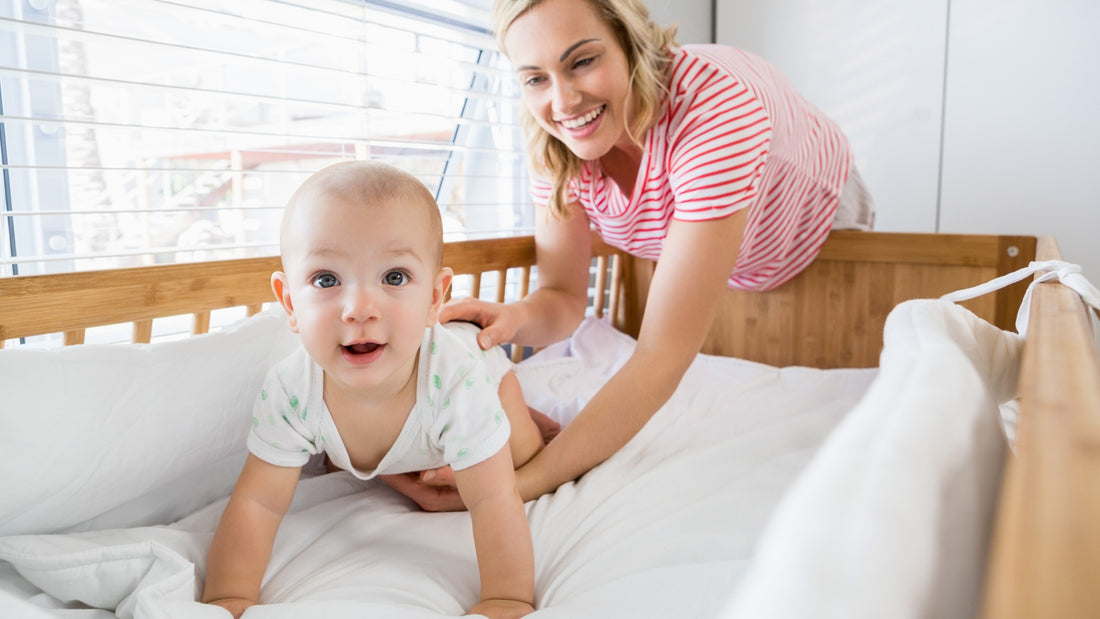This blog will explore the essential factors to consider when selecting the perfect crib mattress to ensure your baby sleeps soundly and safely.
Crib Mattress Safety Considerations
Ensuring crib mattress safety is of utmost importance for your baby's well-being. Here are some essential safety considerations to keep in mind when selecting and using a crib mattress:
Mattress Size
Crib mattresses typically come in standard sizes to fit standard cribs, and these dimensions ensure a safe and secure fit. According to the guidelines set by the Consumer Product Safety Commission (CPSC), the standard size of a crib mattress is at least 27.25 inches by 51.25 inches and 6 inches thick.
Ensuring that the crib mattress fits snugly inside the crib is paramount. There should be no gaps between the mattress and the crib frame. A well-fitted mattress prevents the risk of entrapment, where a baby's body or head could get stuck in any openings.
Firmness
The firmness of the crib mattress is a critical safety consideration. A firm surface reduces the risk of suffocation and helps support the development of a baby's muscles and spine. To check the firmness, press your hand on the mattress surface. It should not yield much and quickly regain its original shape when you remove your hand. The mattress should not have a plush or soft feel that allows a baby's face to sink into it.

Materials and Construction
The materials used in the crib mattress should be free of harmful chemicals and toxins. Look for mattresses that are certified as safe by organizations such as GREENGUARD Gold or CertiPUR-US. These certifications ensure that the mattress meets strict emissions and chemical content standards. Pay attention to the mattress's construction. High-quality mattresses have reinforced edges and seams to withstand wear and tear. They are also designed to maintain their shape and support over time.
Fitting
Ensuring that the mattress fits correctly inside the crib is essential for safety. There should be no more than a two-finger width gap between the mattress and the crib frame. A proper fit prevents the risk of a baby's limbs getting trapped between the mattress and the crib's sides. Check that the corners of the mattress maintain their shape and don't fold or sink when the baby is in the crib. A mattress with strong corner integrity ensures a secure fit.
Types of Crib Mattresses
Crib mattresses come in various types, just like adult mattresses, and choosing the right one for your baby is vital for their safety and comfort. Here are three common types of crib mattresses:
Foam Crib Mattress
Foam crib mattresses are popular for parents due to their affordability and convenience. These mattresses are typically made from polyurethane foam and come in various thickness levels. They are lightweight and easy to handle, making them practical for parents during sheet changes and cleaning. Some foam mattresses are designed to be extra firm, essential for infant safety to reduce the risk of Sudden Infant Death Syndrome (SIDS). Choosing a foam mattress that meets safety standards and certifications is crucial to ensure it is free from harmful chemicals and materials, providing a comfortable and secure sleep surface for your baby.
Innerspring Mattress
Innerspring crib mattresses are known for their durability and firm support. These mattresses feature steel coils or spring cores surrounded by padding and cushioning layers. The firmness of innerspring mattresses is recommended for infant safety, as it helps reduce the risk of SIDS. Innerspring mattresses tend to be heavier and more long-lasting compared to foam mattresses. Many come with an outer covering made of vinyl or other waterproof materials to protect against spills and accidents, ensuring the mattress remains clean and hygienic for your baby.
Hybrid Mattresses
Hybrid crib mattresses combine the best features of both foam and innerspring mattresses. They typically have a core layer of coils or springs for support, surrounded by layers of foam or other cushioning materials for added comfort. Hybrid mattresses aim to balance the durability and firmness of innerspring mattresses and the comfort of foam mattresses. The specific design and materials used in hybrid mattresses can vary, so it's essential to consider the details and quality of the individual product. Overall, hybrid mattresses provide a supportive and comfortable sleep surface for your baby, offering a compromise between different mattress types.

Choosing the right crib mattress is critical in establishing a safe and comfortable sleep environment for your baby. Safety considerations should always come first, focusing on size, firmness, materials, and fit. Once you've addressed these safety aspects, you can select the type of crib mattress that best suits your baby's needs and your budget.
FAQs
How often should I replace my crib mattress?
Replace your crib mattress if you notice any wear and tear or when your child outgrows the crib.
Are waterproof crib mattresses necessary?
Waterproof crib mattresses are beneficial for easy cleaning and preventing liquid penetration. They help deal with baby accidents.
Can I use a secondhand crib mattress?
It's generally only recommended to use a secondhand crib mattress if you are sure it meets current safety standards and has been properly maintained.

